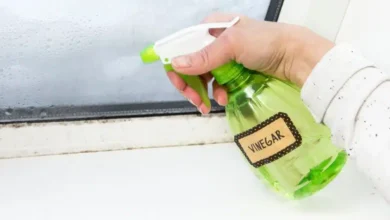Understanding the Health Risks of Indoor Mold Exposure
Indoor mold is more than an unsightly nuisance. It can have significant health consequences that impact the well-being of individuals exposed to it. This article breaks down the risks associated with indoor mold, how it affects your health and practical steps for prevention and management.
What is Mold and Where Does it Grow?
Mold is a type of fungus that thrives in damp, humid environments. It can grow on a range of surfaces like wood, drywall, fabric, and even food. Common areas of mold growth in homes include basements, bathrooms, kitchens, and areas with poor ventilation. Mold spreads through tiny airborne spores, settling on surfaces when conditions like high humidity and warmth are present.
Common Types of Indoor Mold
Allergic Mold
Some types of mold trigger allergic reactions. These molds are not inherently toxic but can cause symptoms such as sneezing, itchy eyes, and skin irritation, particularly in people prone to allergies.
Toxic Mold
Certain molds, such as Stachybotrys chartarum (commonly known as black mold), produce mycotoxins. These toxins can cause severe health problems, especially with prolonged exposure.
Pathogenic Mold
This type of mold poses risks to individuals with weakened immune systems or pre-existing health conditions. Pathogenic mold infestations can lead to respiratory infections in vulnerable populations.
Health Risks Associated with Mold Exposure
Exposure to indoor mold can lead to a wide range of health issues. While some symptoms may be mild, others can significantly impact the quality of life.
Respiratory Problems
Mold spores can irritate airways, triggering symptoms like coughing, wheezing, and shortness of breath. People with asthma or chronic obstructive pulmonary disease (COPD) may experience worsening symptoms due to mold exposure.
Allergic Reactions
Allergic reactions to mold are common and may include nasal congestion, itchy or watery eyes, and skin rashes. Individuals with mold allergies are especially sensitive to environments with poor air quality.
Neurological Symptoms
Prolonged exposure to toxic mold may lead to neurological symptoms such as headaches, fatigue, and difficulty concentrating. Though less common, these symptoms often result from mold exposure that produces mycotoxins.
Immune System Impact
For individuals with compromised immune systems, mold exposure can result in serious infections and illnesses. This is particularly true for infants, the elderly, and those undergoing medical treatments that weaken immunity.
How to Identify Mold in Your Home
Mold is not always visible, but there are telltale signs to watch for:
- Visible growth: Mold often appears as black, green, or white spots on walls, ceilings, or other surfaces.
- Musty smell: A persistent, earthy odor is a strong indicator of mold presence.
- Water damage: Areas affected by water leaks or flooding are highly susceptible to mold growth.
If you suspect mold in your home, addressing it quickly is crucial to minimize health risks.
Preventing Mold Growth Indoors
Controlling indoor moisture is the key to preventing mold. Here are some practical tips:
Maintain Proper Ventilation
Ensure adequate airflow in high-humidity areas like bathrooms and kitchens. Use exhaust fans or open windows to reduce moisture buildup.
Reduce Humidity Levels
Keep indoor humidity levels below 60% by using a dehumidifier if needed. A hygrometer can help you monitor humidity levels effectively.
Address Water Damage Promptly
Leaks from roofs, pipes, or appliances should be repaired immediately. Dry areas thoroughly within 24 to 48 hours to discourage mold growth.
Clean and Maintain Your Home
Regularly clean areas prone to moisture, such as shower tiles and window sills. Avoid carpets in damp spaces like basements, as they can retain moisture.
Managing Mold Problems
If you identify mold in your home, the steps for remediation will depend on its size and severity. For minor mold issues, you can often clean affected areas with a solution of water and detergent. However, always wear protective gear such as gloves and a mask when handling mold.
For extensive mold infestations, professional remediation services are recommended. These experts have the tools and expertise to safely remove mold and prevent its recurrence. Additionally, during mold remediation, it’s also important to address related environmental hazards, such as asbestos removal, to ensure a safe and healthy living environment.
When to Seek Medical Attention
If you or your family members experience persistent health issues like severe allergic reactions, ongoing respiratory symptoms, or signs of mold-related infections, consult a healthcare provider. Early intervention can prevent more serious health problems over time.
Conclusion
Mold exposure poses significant risks to health, particularly for vulnerable individuals. Recognizing the signs of mold, understanding its health effects, and taking preventive measures can make your living space safer and healthier. While minor mold problems can often be addressed with DIY solutions, large-scale mold remediation should be left to professionals. A proactive approach goes a long way in reducing the risks associated with mold in your home.




